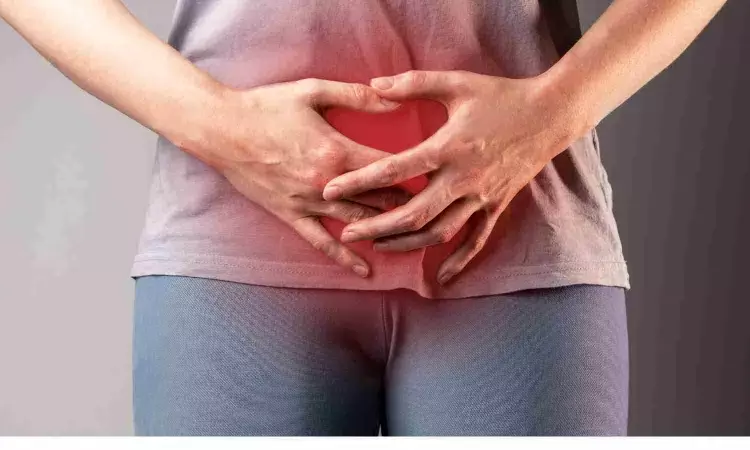- Home
- Medical news & Guidelines
- Anesthesiology
- Cardiology and CTVS
- Critical Care
- Dentistry
- Dermatology
- Diabetes and Endocrinology
- ENT
- Gastroenterology
- Medicine
- Nephrology
- Neurology
- Obstretics-Gynaecology
- Oncology
- Ophthalmology
- Orthopaedics
- Pediatrics-Neonatology
- Psychiatry
- Pulmonology
- Radiology
- Surgery
- Urology
- Laboratory Medicine
- Diet
- Nursing
- Paramedical
- Physiotherapy
- Health news
- Fact Check
- Bone Health Fact Check
- Brain Health Fact Check
- Cancer Related Fact Check
- Child Care Fact Check
- Dental and oral health fact check
- Diabetes and metabolic health fact check
- Diet and Nutrition Fact Check
- Eye and ENT Care Fact Check
- Fitness fact check
- Gut health fact check
- Heart health fact check
- Kidney health fact check
- Medical education fact check
- Men's health fact check
- Respiratory fact check
- Skin and hair care fact check
- Vaccine and Immunization fact check
- Women's health fact check
- AYUSH
- State News
- Andaman and Nicobar Islands
- Andhra Pradesh
- Arunachal Pradesh
- Assam
- Bihar
- Chandigarh
- Chattisgarh
- Dadra and Nagar Haveli
- Daman and Diu
- Delhi
- Goa
- Gujarat
- Haryana
- Himachal Pradesh
- Jammu & Kashmir
- Jharkhand
- Karnataka
- Kerala
- Ladakh
- Lakshadweep
- Madhya Pradesh
- Maharashtra
- Manipur
- Meghalaya
- Mizoram
- Nagaland
- Odisha
- Puducherry
- Punjab
- Rajasthan
- Sikkim
- Tamil Nadu
- Telangana
- Tripura
- Uttar Pradesh
- Uttrakhand
- West Bengal
- Medical Education
- Industry
Highly processed foods may increase symptoms of stress and urgency urinary incontinence among women: Study

According to a recent study conducted at the University of Jyvaskyla, eating behaviour is associated with symptoms of pelvic floor disorders in middle-aged women. For example, higher consumption of highly processed ready-made foods and fast food increased the risk for experiencing symptoms of stress and urgency urinary incontinence. Higher consumption of fruits and an overall higher quality diet decreased the risk for stress urinary incontinence.
The prevalence of pelvic floor disorders increases as women approach their menopausal years. Estrogen deprivation during menopause, natural aging, reproductive history, and factors increasing intra-abdominal pressure may lead to structural and functional failure in the pelvic floor. In addition, lifestyle choices such as quality of nutrition and eating behaviour may have a significant effect on the mechanisms of pelvic floor disorders.
“Eating behaviour has been minimally studied as a potential risk factor for pelvic floor disorders,” says doctoral researcher Mari Kuutti from the Faculty of Sport and Health Sciences of the University of Jyväskylä. “We studied how disordered eating can affect the onset of the symptoms.”
Disordered eating includes overeating, restrictive eating as well as alternating between the two behaviours.
“We found that women who reported disordered eating were more likely to experience the symptoms of pelvic floor disorders than were women who had reported normal eating,” Kuutti says.
The disorders studied were stress urinary incontinence, urgency urinary incontinence, fecal incontinence, and constipation and defecation difficulties.
Pelvic floor disorders are common
Over half of the participants of the study had symptoms of pelvic floor disorders. Most common was stress urinary incontinence. The study revealed that eating behaviour and consuming some dietary items were associated with onset of the symptoms of pelvic floor disorders.
“We studied the potential negative and positive associations of common Finnish food items with the symptoms of pelvic floor disorders,” Kuutti says.
“For example, higher consumption of highly processed ready-made foods and fast food increased the risk for experiencing the symptoms of stress and urgency urinary incontinence. Higher consumption of fruits and overall higher quality diet decreased the risk for stress urinary incontinence.”
As a preventive measure, the eating behaviour of women at risk for these symptoms should be assessed, and guidance towards healthy eating patterns should be provided.
The research is part of the ERMA study, the participants of which included over 1,000 women between the ages of 47 and 55 living in the Jyväskylä region. Participants self-reported their eating behaviour as along with demographic factors (age, body mass index, education, physical workload, and physical activity) and gynecological factors (gestations, parity, menopausal status, and hysterectomy) through questionnaires.
Reference:
Kuutti MA, Hyvärinen M, Lankila H, Aukee P, Hietavala E-M, Laakkonen EK. Association of eating behavior with symptoms of pelvic floor disorders in middle-aged women: An observational study. Women’s Health. 2024;20. doi:10.1177/17455057241305075
Dr Kamal Kant Kohli-MBBS, DTCD- a chest specialist with more than 30 years of practice and a flair for writing clinical articles, Dr Kamal Kant Kohli joined Medical Dialogues as a Chief Editor of Medical News. Besides writing articles, as an editor, he proofreads and verifies all the medical content published on Medical Dialogues including those coming from journals, studies,medical conferences,guidelines etc. Email: drkohli@medicaldialogues.in. Contact no. 011-43720751


